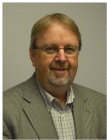Southern Piedmont ASHRAE - PDH Seminars
When: Tuesday, April 23, 2013
Session 1: 8:30-11:30; Session 2: 1:30-4:30 Lunch: 11:30-1:30 will include a presentation by current ASHRAE President, Tom Watson

Parking: The surface parking lot for the UNC Charlotte Center CityBuilding is at 707 N. Brevard St. Parking is $4 (cash only) per day. This lot has no attendant, so please have exact change. The building is a five-minute walk from the Seventh Street station on the Lynx light rail line.
Session 1 – Part A: ACHIEVING A SOUND DESIGN (1 PDH)
The course “Achieving a Sound Design” is intended to educate consultants on the importance of noise control and how to correctly apply noise control solutions. The 60 minute course describes the reasons that noise control is needed in different industries including Healthcare, Education, and Commercial. It will also show equipment in these buildings requiring attenuation. The course demonstrates the necessary steps that a consultant needs to take to correctly apply noise control, while also considering space, energy and IAQ requirements.
Presenter: Mike McCarthy
|

|
Mike McCarthy worked at Vibro-Acoustics in Engineering Design and Sales Management from 1970-1990. Mr. McCarthy owned and operated his own successful Commercial Ventilation contracting business between 1990 and 2008. In 2008, Mr. McCarthy rejoined the Vibro-Acoustics Team as a Business Development Manager, specializing in Sound, Wind and Seismic Restraints for Central USA & Atlantic Canada.
|
Session 1 – Part B: Extreme Event Engineering: Understanding IBC Seismic/Wind Requirements and Risks (2 PDH)
The course “Extreme Event Engineering” is intended to educate consultants on the importance of engineering for the unpredictable so as to manage risk. Topics covered during this 120 minute course will include:
- •· Building code history and referencing
- •· Other requirements – OSHPD, Miami Dade, etc.
- •· What is a restraint?
- •· Type of restraints – cable, rigid, etc.
- •· Rules of thumb
- •· Code terminology – Occupancy Cat., Design Cat., etc.
- •· Importance Factors
- •· How to determine when seismic/wind restraints are required?
- •· Pipe/duct/equipment exemptions and gray areas
- •· Tips on how to minimize risk for the owner, engineer and contractor
- •· Common and uncommon product installations
There will be plenty of opportunity during and after the presentation for questions and discussion.
Presenter: Lawrence Turner
|

|
Lawrence currently is a field engineer with Vibro-Acoustics, primarily focused on conducting coordination meetings and inspections with contractors to ensure building code and specification compliance for seismic and wind restraints and vibration isolation. He frequently conducts educational seminars for the engineering and contracting communities to help minimize risk regarding seismic and wind restraints. His background includes design, estimating and project management for restraint and vibration isolation systems. He has been in the industry for over 6 years and is a current member of ASHRAE (Houston chapter).
|
Session 2: Liquid Desiccant Technology (3 PDH)
In this presentation, Phil Farese will discuss liquid desiccant technology: an alternative, efficient solution to dehumidification and cooling. Areas to be covered include:
- •· Evolution of the Sensible Heat Ratio across 20 years and 7 major cities in the US
- •a. Shoulder/part load implications
- •· Applications with humidity control challenges
- •a. Industrial
- •b. Commercial
- •· Standard approaches for dealing with humidity
- •a. Benefits and limitations of each approach
- •b. Energy consumption comparison between conventional vapor compression, solid desiccant wheel and liquid desiccant system
- •· Liquid desiccant technology overview
- •a. How it works
- •b. Energy savings implications of using liquid desiccant systems
- •c. Renewable/waste heat options for maximum energy efficiency
- •· Case study energy usage comparison of liquid desiccant systems versus conventional approaches
Presenter: Dr. Phil Farese
|

|
Dr. Phil Farese is the Vice President of Technical Sales Support for Advantix Systems, manufacturers of the world’s most efficient air conditioning systems. Dr. Farese holds his PhD in Physics from the University of California, Santa Barbara where he studied Cosmology and made observations of the Cosmic Microwave Background. After a three-year fellowship at Princeton University Dr. Farese left academics to join the management consulting firm McKinsey & Company. There he served high-tech, non-profit, and energy sector clients. After serving as the team lead and an author of the McKinsey report Unlocking Efficiency in the U.S. Economy, Dr. Farese joined the National Renewable Energy Laboratory. He continued his study and support of the energy efficiency field by developing a tool to prioritize energy efficiency investments with findings recently published by the journal Nature and in an NREL technical report.
|